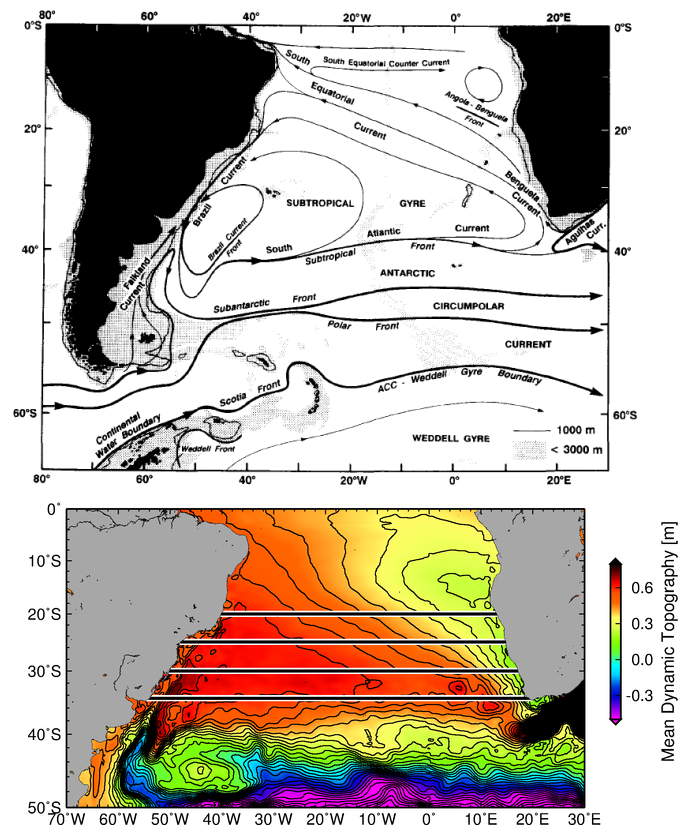South Atlantic Meridional Overturning Circulation (SAMOC)
Estimates based on satellite-altimetry data at different latitudes
Introduction
The Meridional Overturning Circulation (MOC) plays a critical role in global and regional heat and freshwater budgets. Recent studies have suggested the possibility of a southern origin of the anomalous MOC and meridional heat transport (MHT) in the Atlantic, through changes in the transport of warm/salty waters from the Indian Ocean into the South Atlantic basin. This possibility clearly manifests the importance of understanding the South Atlantic MOC (SAMOC). Observations in the South Atlantic have been historically sparse both in space and time compared to the North Atlantic. To enhance our understanding of the MOC and MHT variability in the South Atlantic, a new methodology is recently published to estimate the MOC/MHT by combining sea surface height measurements from satellite altimetry and in situ measurements (Dong et al., 2015).
Goal
Enhance our understanding on the variability of the Meridional Overturning Circulation (MOC) and the Meridional Heat Transport (MHT) in the South Atlantic.
In order to achieve this goal, we developed a new methodology that allows to obtain the MOC and MHT time series since 1993 through a combination of the satellite and in situ measurements. This new methodology allows to estimate the MOC and MHT in real time.

(upper panel) Schematic representation of the large-scale, upper-level geostrophic currents and fronts in the South Atlantic Ocean from Peterson and Stramma (1991). (lower panel) Mean dynamic topography for the South Atlantic.
Peterson, R., and L. Stramma (1991), Upper-level circulation in the South Atlantic Ocean, Progress in Oceanography, Vol 26, 1-73.